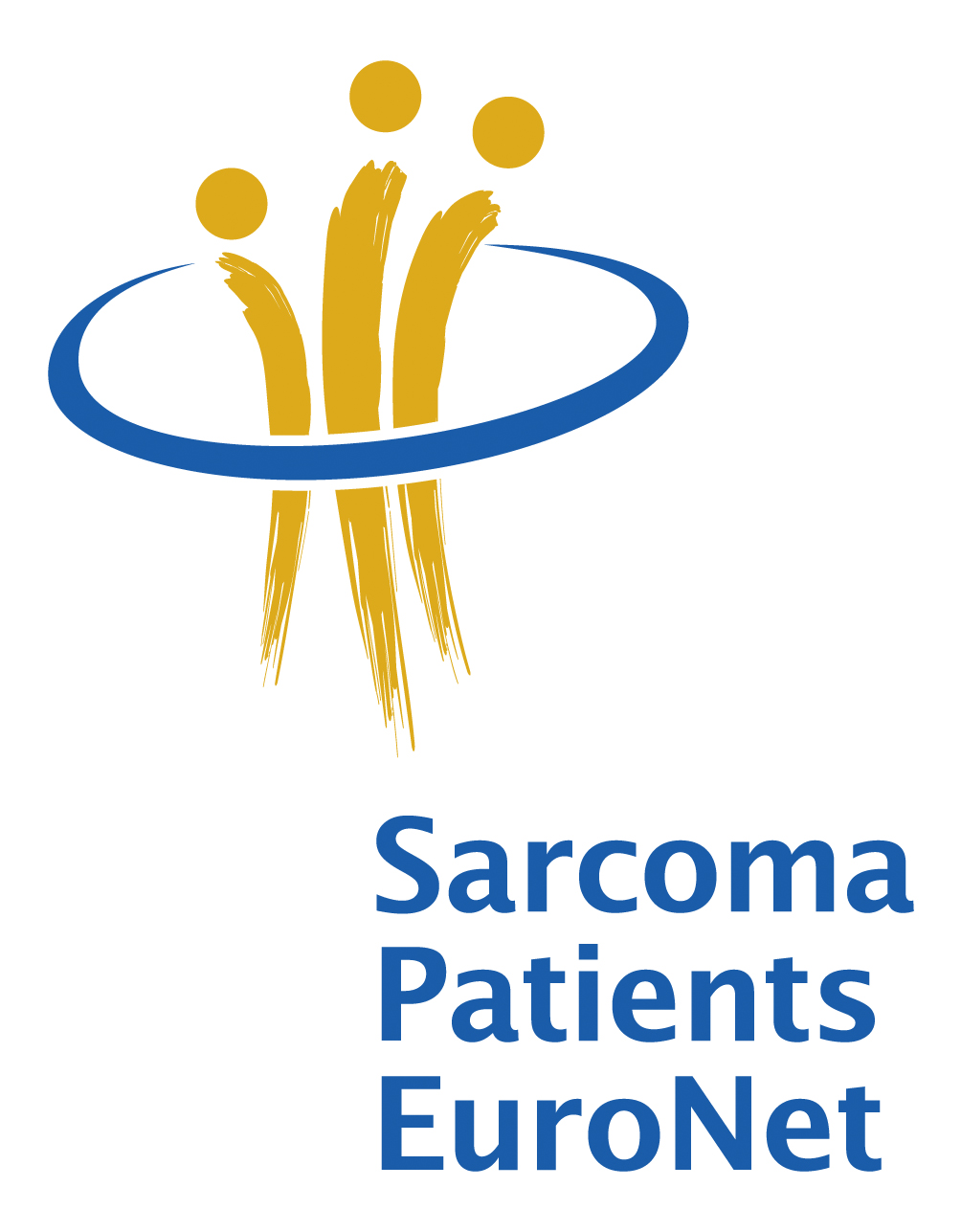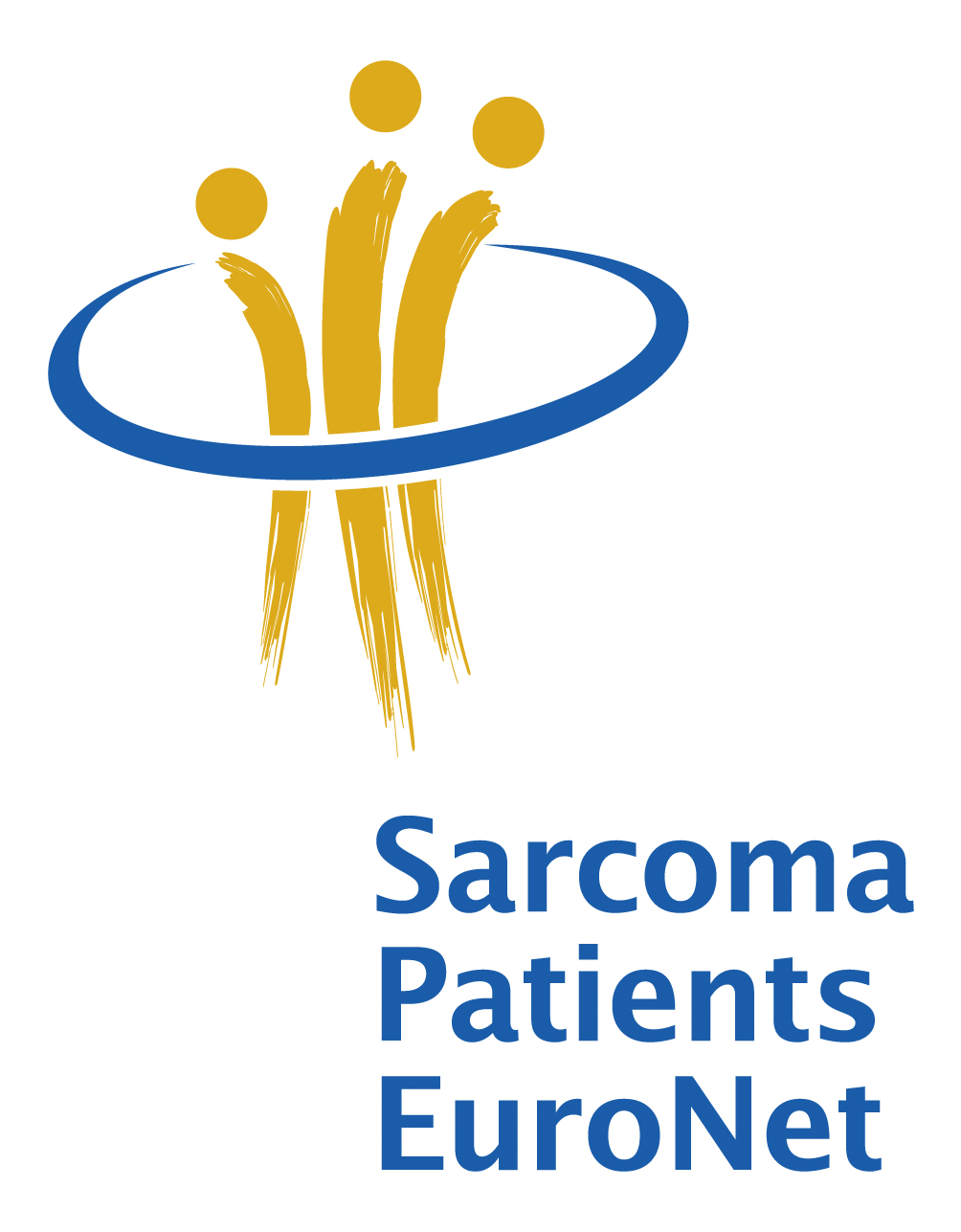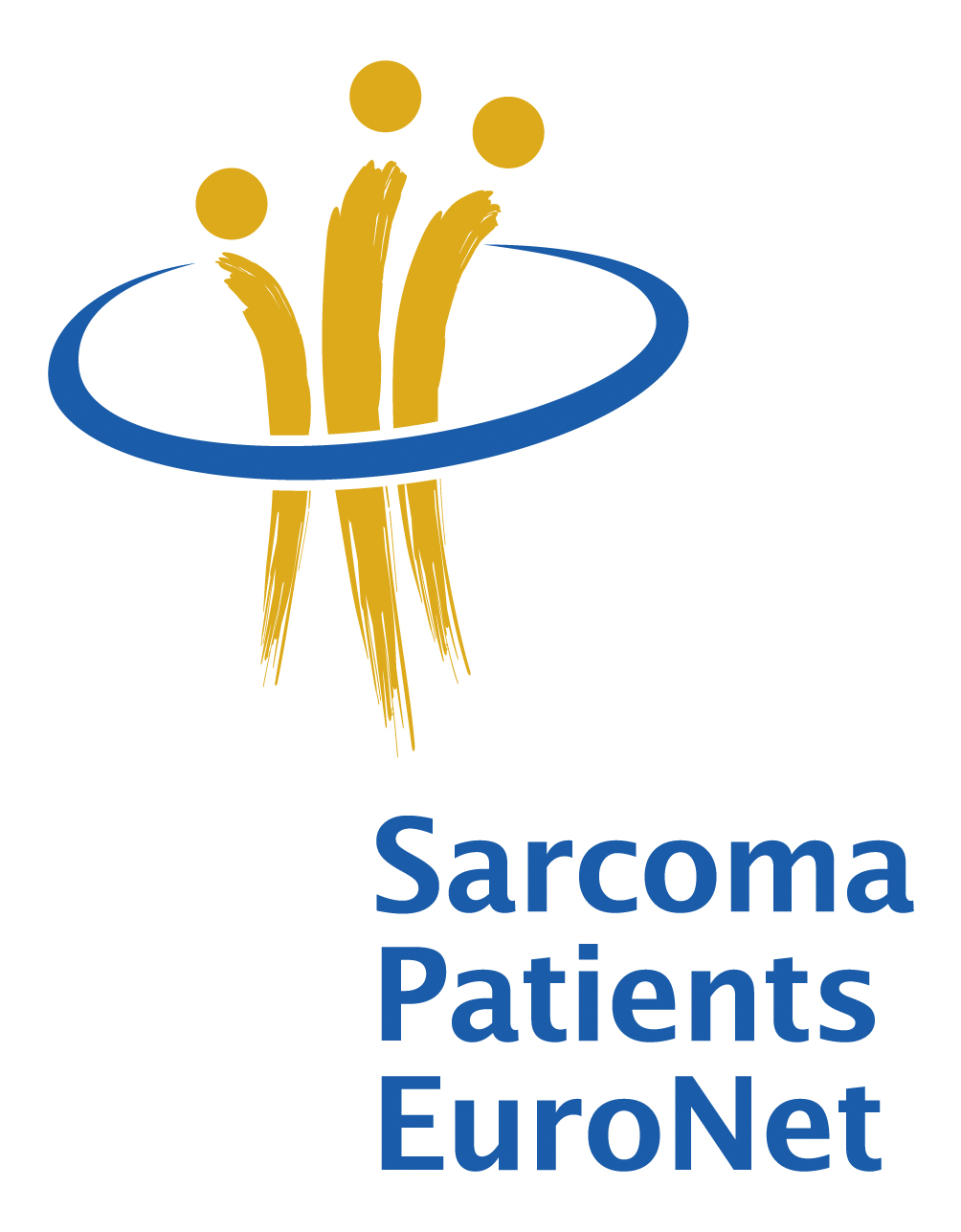Glossary
- adjuvant
-
Adjuvant treatment is a kind of "preventative therapy": After the complete removal of a tumor, adjuvant treatment is given as prophylaxis against recurrences. It aims to treat so called micro metastases that may be present but not yet visible, and therefore lower the risk of a recurrence. Adjuvant therapy is usually recommended for sarcoma patients, whose risk of recurrence – despite a successful operation – remains high.
- Biopsy
-
The removal of tumour tissue for examination by a pathologist who studies the tissue under a microscope and performs other tests on the cells or tissue to identify and diagnose it.
- Connective tissue
-
Connective Tissue (CT) is found throughout the body. It has three main components; cells, fibers, and extracellular matrix. Connective tissue makes up a variety of physical structures including, tendons, blood, cartilage, bone, adipose tissue, and lymphatic tissue.
- CT (Computer tomography)
-
CT is an x-ray method, which shows a cross-section of the human body. Unlike conventional x-rays, where the rays only penetrate the human body from one side, CT scans use rotating x-rays to take a view at the body from all sides.
- Curative
-
Curative medicine aims to end the disease or to impede its progress. Healing in its fullest sense, meaning a complete recovery, is not always possible. Curative activities, together with preventative, rehabilitative and the palliative activities, make up the pillars of medicine.
- Ewing's sarcoma
-
Ewing's sarcoma is a malignant (cancerous) bone tumor that affects children. Ewing's sarcoma can occur any time during childhood and young adulthood, but usually develops during puberty, when bones are growing rapidly. The tumor often spreads (metastasis) to the lungs and other bones. Metastasis at the time of diagnosis is present in approximately one third of children with Ewing's sarcoma. Ewing's sarcoma only rarely occurs in adults and never over 50 years of age.
- First-line therapy
-
simply refers to whichever specific therapy is implemented first when treating a disease, or, in the sequence of therapies to be implemented, which one is approved to be used first. We often also refer to first-line therapy as standard therapy, or the "gold standard". In situations where the first-line therapy is no longer effective, second-line therapy is implemented, and then, if necessary, third-line therapy, etc.
- GIST
-
Gastrointestinal stromal tumor (GIST) affects the digestive tract or nearby structures within the abdomen. The most common location is the stomach. GI stromal tumor, or GIST cancer, is a sarcoma.
- Grading (differentiation)
-
Sarcomas are a very varied (= heterogeneous) group of tumors. Although they are all grouped under one term, sarcomas can involve very different growth processes. In general, we can say: The more tumor cells resemble normal tissue cells, the slower they generally divide. This is referred to as a high level of differentiation. The faster sarcoma cells divide, the harder it is to identify the original tissue. The tumor is then referred to as undifferentiated, and is considered more malignant.
In fine-tissue examinations (histology), the pathologist roughly divides sarcomas using the degree of differentiation (grading), which in Europe is divided on a scale from G2 to G3.
- Immunhistochemistry
-
Immunohistochemistry is a way to examine sample tissue: The pathologist applies antibodies to the tissue sample. The antibodies are meant to react to certain proteins on the surface of cells. If the antibodies bind to specific proteins on the cell's surface, a spot or a change of color can be seen on the tissue sample. The tissue sample is said to be "spot-positive" if the protein was shown to be present by the antibodies.
- Mesenchymal Tissue
-
The human body is made up of many different kinds of tissues, which are composed of different kinds of cells. The ectoderm is what skin, hair, brain, nerve, and sensory organ cells come from. The endoderm forms the basis for the lungs' surface (mucus membranes), the bladder, and intestinal tract, as well as mammary glands, the liver, and the pancreas. Tumours that grow out of these tissues are called carcinomas.
The mesoderm is the basis for support and movement structures, such as bones and muscle, as well as soft tissue, and blood and lymph vessels. When these types of tissues are fully mature, they are called mesenchymal tissues. Almost all malignant tumours that develop in mesenchymal tissues are called sarcomas.
- Mitotic Count/Mitotic Rate
-
The mitotic count or mitotic rate is a measure of how fast cancer cells are dividing and growing. To find the mitotic rate, the number of cells dividing in a certain amount of cancer tissue is counted. Mitotic rate is used to help find the stage of different kinds types of cancer such as GIST.
- MRT/MRI (magnetic resonance tomography/imaging)
-
MRT/MRI is an imaging process that produces images of the inside of the human body. It provides cross-sectional imaging using magnetic fields.
MRT/MRI provides reliable and differentiated images of water-containing tissues, like internal organs, joint cartilage, meniscus, the spinal cord, or the brain. It is very useful in sarcoma for informing surgeons of the proximity of tumours to bones, nerves and other important organs.
- Neoadjuvant
-
The term "neo-adjuvant therapy" (from the Latin adjuvare, meaning to help) refers to therapy that is carried out before the operation (= resection) of a tumor. A neo-adjuvant therapy can generally be chemotherapy, radiation therapy, or treatment using pre-operative targeted therapy. The goal of neo-adjuvant therapy is make the resection of a tumor as easy as possible (e.g. by reducing its size) or to reduce the operation’s scope to a minimum. It’s also referred to "downstaging" a tumour disease.
- Osteosarcoma
-
Osteosarcoma is a cancerous tumor that occurs in the bone. Osteosarcoma is a primary bone cancer. That means the cancer originates in the bone itself.
Most osteosarcomas appear in the long bones of the body, such as the femur (the thigh bone), the tibia (the shinbone) or the humerus (the bone that runs from the shoulder to the elbow), although they can appear in any bones.
Osteosarcoma is the oldest cancer known to man. A fossilized humanoid foot found in South Africa is 1.7m years old and it had osteosarcoma.
- Palliative
-
Palliative treatment is the medical term for treatment that makes a disease easier to bear, in contrast to healing it.
- Pathology
-
Pathology is the study of diseases - or more specifically, of the ways that diseases change cells, tissues, and organs. Doctors who do this kind of work are called pathologists. They work towards identifying the cells the cancer originated in, but also towards exact morphological and pathological identifications, and they also contribute to the prognostic assessment. Correct treatment always depends on the kind of cancer. Pathology therefore plays a crucial part for further treatment strategies.
- PET (Positron Emission Tomography) or PET/CT
-
PET is a nuclear medicine imaging process often linked with a CT scanner: A radio-labeled glucose is injected and after a short period of time to allow the sugars to be taken up by the body a scan is taken. The PET camera can see metabolic processes inside the body, some of which are natural and some may be tumours. PET scans are used for early recognition of certain cancers, and for assessment.
- Proton beam radiotherapy
-
Proton beam radiotherapy is a form of radiotheraopy which causes no damage to healthy tissues along the pathway of the beam treating the tumour. It is especially valuable in treating young women with pelvic Ewings tumours as it does not damage reproductory organs.
- Radiation or Radiotherapy
-
Radiation therapy is applied regionally or locally to destroy tumor tissue with high-energy radiation beams.
The dosage unit of radiation therapy is called a Gray (often abbreviated to Gy). The dosage needed for destroying a tumor depends on the radiation sensitivity of the sarcoma in question, but is usually between 40 and 70 Gy. The total dosage used on an individual patient is determined by the treating radio-oncologist before start of treatment. The total dosage is administered in several so-called fractions.
- Resection
-
Resection refers to the complete or partial removal of an organ or of tissue during an operation. Tumor resections are divided into the following levels:
R0 resection: Removal of the entire tumor including a rim of normal tissue around it. Using a microscope the pathologist can not find any trace of the tumor around the resection area.
R1 resection: The tumor is macroscopically removed. Pathology shows tumor residue around the resection area.
R2 resection: Tumor tissue can still be seen on the margins of the resection area by the naked eye. In some cases, surgeons cannot fully remove the whole tumor due to its size or location without harming other organs or tissues too much.
- Scintigraphy
-
Scintigraphy refers to a nuclear medicine examination method, in which the patient is injected with radio-labeled substances, which accumulate in certain organs and are observed using a gamma camera. This renders certain bodily tissues visible - especially bones and the thyroid.
- Staging
-
Staging means performing examinations and tests to learn about the extent of the cancer, e.g. how large the tumor is and if it has spread. Knowing the stage of the disease is important to plan the best treatment and/or identify clinical trials that may be treatment options. Most staging systems include information about location and size of the tumor, cell type, whether the cancer has spread to nearby lymph nodes or different parts of the body and tumor grade (refers to how abnormal the cancer cells look and how likely the tumor is to grow and spread).
- Targeted Therapies
-
New insights from molecular biology and biomedicine reveal certain features and characteristics of malignant cells which can be targeted by the development of new, specific drugs. For example, cancer cells usually show changes in their genetic material (= mutations) which lead to altered protein structures where either the cause can be inhibited or the effect can be treated.
Since these characteristics do not (or only rarely) show up in normal cells, targeted therapy specifically fights cancer cells and spares healthy cells. This approach usually makes it both effective and less toxic than chemotherapy.
- TNM Classification
-
The TNM classification describes the extent of a cancer according to stages.
TNM is an abbreviation for:
- T = Tumor: Describes the size and behavior of the primary tumor
- N = Node: Describes the status of the lymph nodes that may or may not be involved.
- M = Metastases: Describes the presence or absence of distant metastases.
All examinations conducted aim to identify the stage of the disease. These disease stages are divided according to the TNM classification system. We differentiate between four stages (I to IV), each divided once more into two parts (A and B). Which disease stage is at hand depends on
- whether metastases are present (metastases in nearby lymph nodes or in distant tissues).
- how degenerated the tumor cells are (histopathological findings) and
- the size of the primary tumor
- Ultrasound (Sonography)
-
Sonography refers to the use of ultrasounds to examine organic tissue – the resulting image is called a sonogram. Sonography is the most widely used imaging process in medicine.
Endosonography is a kind of sonography, where the transducer is inserted into the body – usually using an endoscope.







